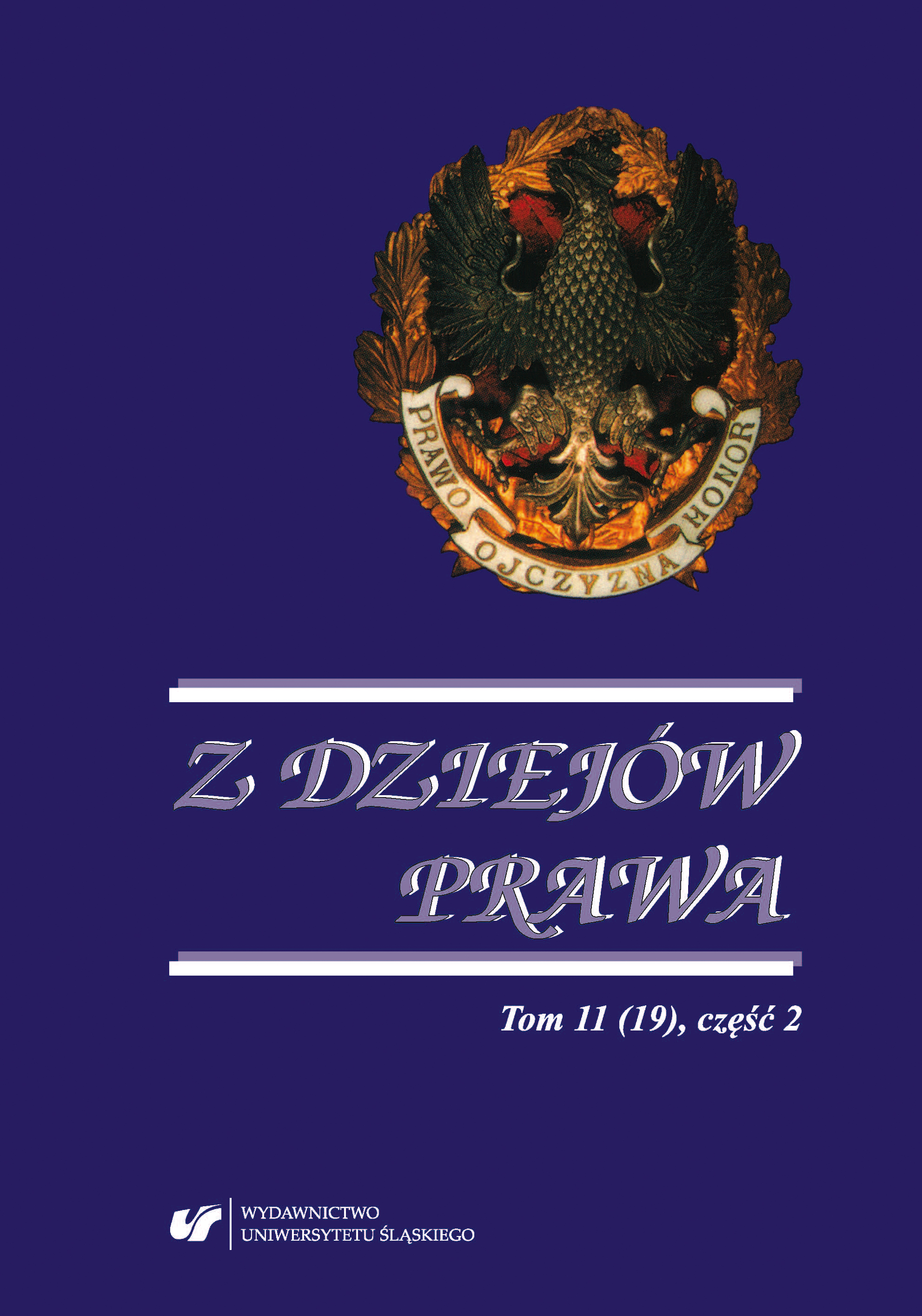Ustrój samorządny województwa śląskiego czy autonomia? Spór doktrynalny czy też różne instytucje ustrojowe?
Silesian Voivodship — Self-Government or an Autonomy? A Doctrinal Dispute or Different Government Structures?
Author(s): Andrzej DrogońSubject(s): Law, Constitution, Jurisprudence, History of Law, Public Administration, Government/Political systems, Pre-WW I & WW I (1900 -1919), Interwar Period (1920 - 1939), WW II and following years (1940 - 1949)
Published by: Wydawnictwo Uniwersytetu Śląskiego
Keywords: Second Republic of Poland; Silesian Voivodship; decentralization; autonomy; structure of government
Summary/Abstract: Legislative competences guaranteed the voivodeship far-reaching independence within the Polish state’s system of government. A fundamental question arises as to what extent the scope of matters defined as self-governing by the constitutional bill of July 15, 1920, making the Silesian voivodship autonomous, breached the fundamental principles upon which the structure of government was based according to the March Constitution passed eight months later. It is mainly the case of the state’s uniformity. The terms a “self-governing system” and an “autonomous system of government” may be used interchangeably, noting that the binding phrase for a lawyer should be: a system based on self-governing laws, as it derives from statutory terminology. Regardless of which of these terms we are going to use, they will contain in essence, in their semantic layer a broad form of decentralization, perceived as a scope of competences ascribed to a given community and giving a local community vast freedom to realize their most required goals.
Journal: Z Dziejów Prawa
- Issue Year: 19/2018
- Issue No: 11 (2)
- Page Range: 121-138
- Page Count: 18
- Language: Polish

